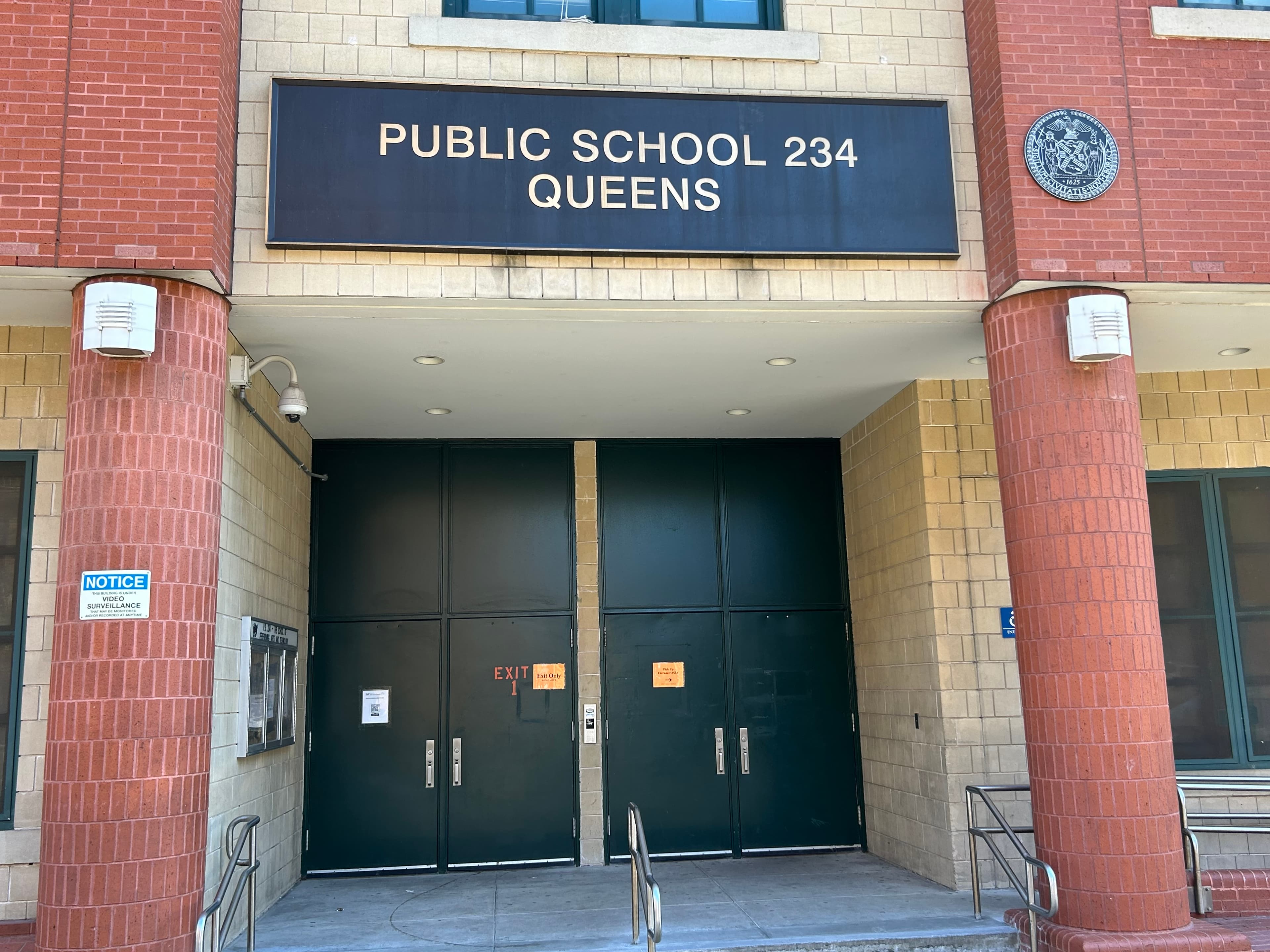
All across the city, schools in nearly every borough have opened their doors and classrooms to new students from across the world. And it hasn’t been easy.
Just months after New York City opened its arms to a wave of nearly 118,000 migrants and asylum seekers, including about 20,000 children, the youngest among these newcomers are not just navigating the concrete jungle, but also the intricate pathways of education in a new environment.
These young people “are very different from one another but they share a common experience,” said Eddie Barba, a guidance counselor at I.S. 235 The Academy for New Americans, a school that is specifically for newly arrived immigrants. “That is to say, they all know what it is like to leave their country behind, to leave behind their homes, their grandparents, best friends, pets, etc., and to come to a new nation with a different culture, a different language, and to suddenly become outsiders in a new world.”
But it’s not just what’s happening inside the classroom that’s been tough on them. The outside world adds another level of stress.
Since they arrived, tensions have been high. At the beginning of the school year, there were angry anti-migrant protests, some saying that immigrants are not safe or welcome in New York. Migrant families have also found it difficult to find housing or space in the city’s homeless shelters. As the influx continues, fueled by Republican leaders in southern states bussing migrants north to cities like New York, Washington, D.C., and Philadelphia, the migrant issue in New York has become a political crisis.
Mayor Eric Adams stated that the issue would “destroy” the city. The Adams administration has also made deep cuts to the city budget, which has put a strain on city programs, leading to a police hiring freeze and the limiting of public library days. The city said the influx of migrants could cost New York up to $12 billion.
“No city should be left to handle a national humanitarian crisis largely on its own, and without the significant and timely support we need from Washington, D.C., today’s budget will be only the beginning,” the mayor said in a recent statement.
In the midst of all of this, the city’s education budget is set to be slashed by $600 million this year, in a second year of massive cuts. There’s great concern that the city isn’t prepared for the continued influx of school-age migrants and the many issues that may arise.
“I don't think the DOE is doing enough right now, but I also don't think they have the means to do enough. Students need counselors, they need language support, they need familiar food - that's all really hard to provide with the budgets we've been allotted,” said Rosalie Teverow, a NYC teacher. “I think we need funding directed at ELL supports at a family level, and also family supports for transitioning to a new country and culture. The DOE needs to have people who can help families navigate the school system, navigate health care and jobs, navigate various public assistance programs, everything that they could need. The scripted curricula that the DOE is insisting upon also does not help our students learn.”
Several teachers told the Bullhorn that the need for language support and bilingual teachers should be a priority. Yet, they say, it’s not as simple as ABC.
“Some of my 2nd-grade students who recently moved here do not know their numbers or letters in Spanish. This makes it more challenging for them to keep up with 2nd-grade-level concepts and skills,” said Katie Masson.
Throughout all of this, besides the strain of learning the basics, these students are also grappling with learning how to process their inner trauma and grief.
“What our students have experienced or witnessed on their journey to immigrating to this country is unbelievable,” said Barba, a teacher at IS 235. “I have heard stories from my students about seeing dead bodies, of witnessing assaults first hand, of almost having family members kidnapped while crossing through Mexico and so much more. When you combine these incidents with the trauma that accompanies the separation from one's homeland and having to leave friends and loved ones behind, there is a dire need for additional mental health professionals to help support these students.”
Day in and day out, educators are doing everything they can to foster a safe space for those who need it most. They’re acknowledging the difficult positions the students may be in, creating “culturally responsive classrooms” by filling bookshelves with books that reflect their students' backgrounds, and by creating special events that encourage community. In the classroom, teachers are using technology and visual aids to display clear messages.
“All of my lessons are taught in English, but I am mindful of how my Spanish-speaking students may feel and try to make connections as much as possible,” said Katie.
Despite the political, economic, and emotional challenges facing the city and its newest members, there’s a sense of optimism and fellowship among some of the children.
"It's hard to hate or be intolerant of another person who is different from you if you are able to talk to them, spend some time together, play together, and most importantly, share a meal together," commented Barba. The students at IS 235 all share a familiar experience, the hurdle of having to adjust to a new culture–they all know how it feels to restart.
“By being in class together with others who are also learning English for the first time, and yes, sharing meals together every day, something special happens, a group of students from China, Venezuela, and Afghanistan soon become a band of brothers and two young girls, one from China, the other from Albania, become inseparable and become long lost sisters.”